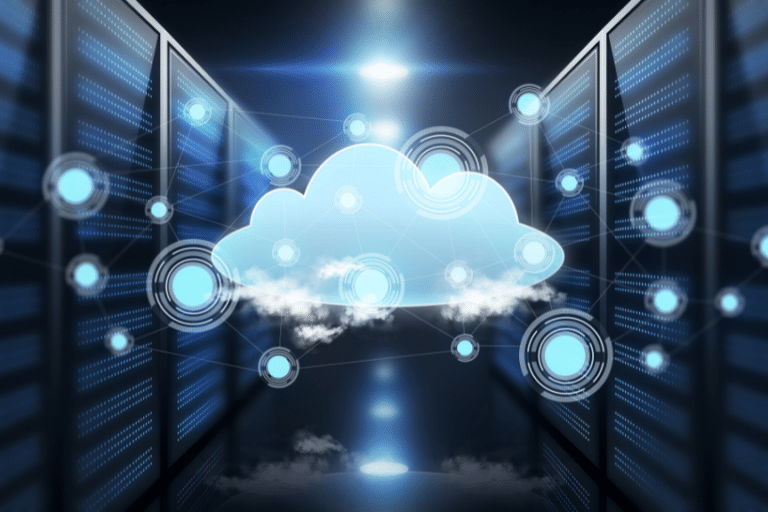Choosing the right cloud computing platform is crucial for businesses looking to leverage the cloud for their infrastructure needs. This article delves into a comprehensive comparison of cloud computing prices across the three major platforms: Amazon Web Services (AWS), Microsoft Azure, and Google Cloud Platform (GCP). Our goal is to provide businesses with the insights needed to make informed decisions when selecting a cloud provider.
Table of Contents
The Benefits of Using the Cloud
The shift towards cloud computing continues to accelerate, driven by its compelling advantages to businesses of all sizes. Beyond pricing flexibility and the breadth of services, the cloud provides strategic benefits that can transform operational efficiency, innovation, and market responsiveness. Here’s an overview of the key benefits that make cloud computing an essential component of modern business strategy.
Scalability and Flexibility
One of the most significant advantages of cloud computing is its scalability. Businesses can easily scale their IT infrastructure up or down based on demand without the need for significant upfront investment in physical hardware. This flexibility allows companies to respond swiftly to market changes, manage growth effectively, and maintain performance during peak periods.
Cost Efficiency
The cloud’s pay-as-you-go pricing model translates into substantial cost savings. By paying only for the resources they use, businesses can avoid the capital expenditure associated with purchasing and maintaining their own IT infrastructure. This shift from CapEx to OpEx frees up capital for other strategic investments and makes IT costs more predictable and manageable.
Enhanced Collaboration
Cloud services facilitate better collaboration within and across teams by providing centralized access to files and applications from anywhere. This accessibility supports remote work, enhances productivity, and speeds up project delivery by enabling real-time sharing, editing, and communication among team members.
Improved Business Continuity
With cloud computing, data backup, disaster recovery, and business continuity become more efficient and less costly. Data is mirrored across multiple redundant sites on the cloud provider’s network, ensuring data integrity and quick recovery in the event of a hardware failure, natural disaster, or other disruptions.
State-of-the-Art Security
Leading cloud providers invest heavily in securing their infrastructure with cutting-edge technologies and practices. Businesses benefit from robust security measures, including data encryption, network firewalls, intrusion detection, and regular security audits, reducing the risk of data breaches and cyber threats.
Rapid Deployment and Innovation
The cloud enables businesses to deploy applications and services rapidly, significantly reducing the time to market. This agility supports innovation by allowing companies to experiment with new ideas and technologies without the risk of substantial upfront investment. The cloud’s vast ecosystem of services and tools further fuels innovation, from artificial intelligence and machine learning to Internet of Things (IoT) applications.
Environmental Sustainability
By optimizing resource usage and reducing the need for physical data centers, cloud computing contributes to environmental sustainability. Cloud providers often use renewable energy sources and implement energy-efficient practices, helping businesses reduce their carbon footprint and support their sustainability goals.
Access to Advanced Technologies
Cloud platforms offer businesses access to the latest technologies and tools, enabling them to leverage advanced capabilities such as machine learning, artificial intelligence, big data analytics, and more. This access allows companies to gain insights, improve decision-making, and create new products and services that can give them a competitive edge in their markets.
What Factors Affect Cloud Pricing?
Understanding the intricacies of cloud pricing is essential for businesses aiming to leverage cloud computing effectively. Several key factors influence the cost of cloud services, impacting the overall budget and financial planning for cloud adoption. Here’s a detailed exploration of the elements that shape cloud pricing across platforms like AWS, Azure, and GCP.
Resource Consumption and Demand
The core of cloud pricing revolves around the resources you consume, including compute instances, storage capacity, data transfer, and additional services like machine learning or database usage. The more resources your applications use, the higher the cost. Furthermore, demand can influence pricing, especially with services priced at market rates, such as spot instances, where prices fluctuate based on supply and demand.
Service Model
Cloud providers offer various service models, including Infrastructure as a Service (IaaS), Platform as a Service (PaaS), and Software as a Service (SaaS). Each model comes with its pricing structure, reflecting the level of management and abstraction provided. IaaS solutions typically offer more control but require more management, while SaaS solutions are fully managed but might come at a higher cost.
Data Transfer and Network Usage
Data transfer fees, particularly for data moving out of the cloud provider’s network to the Internet or another cloud service, can significantly affect costs. While inbound data transfer is often free, outbound data transfer can accumulate substantial fees, especially for data-intensive applications.
Storage and Database Options
The type and amount of storage, along with database services used, play a crucial role in determining cloud costs. Options range from high-performance SSD storage to cost-effective archival storage solutions, each priced differently. Similarly, managed database services vary in price based on the database engine, capacity, and throughput requirements.

Geographic Region
Cloud providers operate data centers across the globe, and the region you choose for deploying your services can impact pricing. Factors such as local economic conditions, energy costs, and regulatory requirements can cause price variations between regions. Selecting a region close to your users can reduce latency but might come at a higher price.
Customization and Additional Features
Customizing your cloud environment with additional features like enhanced security, dedicated hardware, or custom APIs can also affect pricing. While these features can provide significant benefits, they often come with additional costs that need to be factored into the overall budget.
Commitment and Payment Plans
Cloud providers typically offer discounts for long-term commitments or upfront payments. Options like reserved instances or committed use discounts can provide substantial savings over on-demand pricing. However, these commitments require accurate forecasting of your future needs to avoid overcommitting or underutilizing resources.
Compliance and Security Requirements
Adhering to specific compliance and security standards can also influence cloud pricing. Services that offer compliance with standards such as GDPR, HIPAA, or SOC 2 might come at a premium due to the additional controls and audits required.
Understanding Cloud Computing Pricing Models
Navigating the pricing models of cloud computing services is essential for businesses aiming to optimize their cloud expenditures. This section expands on the pricing models of AWS, Azure, and GCP, providing deeper insights into how businesses can leverage these models for cost efficiency.
AWS Pricing Overview
Amazon Web Services (AWS) adopts a flexible pay-as-you-go pricing model, which is designed to cater to a wide range of computing needs without upfront costs or long-term commitments for most of its services. This model encompasses a broad spectrum of services, including but not limited to compute power with Amazon EC2, scalable storage solutions with Amazon S3, and managed database services with Amazon RDS. Each service within the AWS ecosystem operates on its unique pricing structure, allowing users to pay for exactly the amount of resources they utilize.
A notable feature of AWS’s pricing model is the Reserved Instances offering. This option allows users to reserve cloud capacity for one or three years, providing a significant discount over on-demand pricing rates. The discount can reach up to 75%, depending on the commitment term and payment options, which include no upfront, partial upfront, or all upfront payments. This model is particularly beneficial for businesses with predictable workloads that can commit to using a consistent level of resources over time.
Azure Pricing Insights
Microsoft Azure’s pricing model mirrors the pay-as-you-go approach, enabling businesses to scale their usage up or down based on their current needs, with prices adjusting accordingly. Azure’s diverse portfolio includes virtual machines, app services, and database services, each priced according to the resources consumed, such as CPU hours, storage space, and data transfer volumes.
Azure differentiates itself with the Reserved Instances and Hybrid Benefit options. The Reserved Instances model offers up to a 72% discount on standard pay-as-you-go rates for users who commit to one or three years of service usage. This model is ideal for enterprises with stable, long-term cloud computing needs. Additionally, Azure’s Hybrid Benefit provides a cost-saving opportunity for businesses with existing Windows Server licenses, allowing them to apply these licenses to Azure services at a reduced cost, further enhancing the platform’s appeal to Windows-centric environments.
GCP Pricing Analysis
Google Cloud Platform (GCP) introduces a unique approach to pricing with its sustained use discounts, which automatically apply as users increase their usage of a particular service each month. This model rewards consistent usage with discounts, making it an attractive option for businesses with steady workloads.
GCP’s pricing is also characterized by its flexibility, with costs varying by service type, region, and the amount of resources used. In addition to sustained use discounts, GCP offers Committed Use Discounts for customers willing to commit to one or three years of continuous service usage. These discounts can significantly reduce costs for businesses that can accurately predict their cloud service needs over the medium to long term.

Strategic Considerations for Cloud Cost Management
When evaluating cloud computing options, businesses must consider not only the base rates of services but also the availability of discounts, the predictability of their workloads, and the potential for long-term commitments to reduce overall costs. Each cloud provider offers a unique set of pricing models and discounts, making it crucial for businesses to carefully assess their specific needs and usage patterns before making a decision.
Comparing Key Services Across Platforms
The selection of a cloud provider often hinges on the comparison of key services such as compute, storage, and database offerings. These services form the backbone of cloud infrastructure, supporting a wide array of applications and workloads. Let’s delve deeper into how AWS, Azure, and GCP stack up against each other in these critical areas.
Compute Services Comparison
Compute services are at the heart of cloud offerings, enabling businesses to run applications and workloads on virtual servers. AWS EC2, Azure Virtual Machines, and GCP Compute Engine provide scalable compute options with a variety of configurations to meet different performance, security, and cost requirements.
AWS EC2
AWS EC2 stands out for its extensive instance family, catering to general-purpose, compute-optimized, memory-optimized, and GPU instances. This diversity allows businesses to select the ideal balance of computing power and price for their specific needs. AWS further sweetens the deal with Reserved Instances, offering up to 75% discounts for long-term commitments, making it a cost-effective choice for predictable workloads.
Azure Virtual Machines
Azure Virtual Machines emphasize integration with Microsoft’s ecosystem, offering seamless connectivity with Azure services and Microsoft software. The Azure Hybrid Benefit significantly reduces costs for businesses already invested in Microsoft technologies. Like AWS, Azure also provides reserved instances, with discounts up to 72%, appealing to enterprises looking for cost savings on steady workloads.
GCP Compute Engine
GCP Compute Engine differentiates itself with its sustained use discounts, which automatically apply as usage increases, rewarding consistent use without the need for upfront commitments. GCP’s custom machine types and per-second billing also offer granular control over resources and costs, making it an attractive option for businesses seeking flexibility.
Storage Services Comparison
Storage is another critical component, with cloud providers offering solutions for object, block, and file storage to accommodate various data management requirements.
AWS S3
AWS S3 is renowned for its scalability and durability, providing a secure and highly available environment for storing any amount of data. S3 offers multiple storage classes designed for different access patterns and cost optimization, including Standard, Intelligent-Tiering, and Glacier for long-term archiving.
Azure Blob Storage
Azure Blob Storage excels in its integration with other Azure services, offering a cohesive environment for developing and deploying applications. It provides hot, cool, and archive storage tiers to balance access frequency and cost, making it suitable for a wide range of storage scenarios.
GCP Cloud Storage
GCP Cloud Storage is known for its simplicity and pricing transparency, offering straightforward storage options with no egress fees for data accessed within the same region. Its multi-regional storage solutions ensure data is automatically replicated across regions for high availability and disaster recovery purposes.
Database Services Comparison
Managed database services relieve businesses from the administrative burden of database management, ensuring high availability, security, and scalability.
AWS RDS
AWS RDS supports multiple database engines, including MySQL, PostgreSQL, Oracle, and SQL Server, allowing businesses to migrate or deploy their databases easily. RDS stands out for its automated backups, patching, and performance monitoring, simplifying database administration.
Azure SQL Database
Azure SQL Database is a fully managed relational database service that leverages Microsoft’s SQL Server technology, offering built-in intelligence that adapts to your app’s patterns to maximize performance, reliability, and data protection. Azure’s service integrates seamlessly with other Azure offerings, providing a comprehensive environment for Microsoft-centric development.
GCP Cloud SQL
GCP Cloud SQL provides a fully managed database service that supports MySQL, PostgreSQL, and SQL Server, focusing on ease of use, scalability, and maintenance. It offers automatic backups, replication, and failover to ensure your database remains available and secure.
Making the Right Choice for Your Business
The decision to select a cloud provider is a pivotal one, impacting not just the technological foundation of your business but also its financial health and operational efficiency. As you navigate through the offerings of AWS, Azure, and GCP, it’s crucial to weigh several factors beyond the surface-level features and pricing. Here’s an expanded look at the considerations to guide your choice:
Pricing Flexibility
The ideal cloud provider should offer a pricing structure that not only fits your current budget but also adapts to your evolving needs. While AWS, Azure, and GCP all provide pay-as-you-go models, their pricing nuances, such as discounts for reserved instances or sustained use, can significantly influence long-term costs. Assessing how these models align with your usage patterns—whether your workloads are steady, fluctuating, or growing—will help you forecast expenses more accurately and avoid unexpected charges.
Comprehensive Service Range
The breadth and depth of services offered by a cloud provider are critical to supporting your business’s current and future projects. While AWS boasts an extensive array of services across computing, storage, database management, and beyond, Azure and GCP also offer robust ecosystems with unique strengths, particularly in integration with Microsoft products and open-source technologies, respectively. Evaluating the service range involves not just ticking boxes for your immediate needs but also considering potential future requirements as your business scales and diversifies.
Global Reach and Data Center Locations
For businesses operating on a global scale or aiming to expand, the geographical distribution of a cloud provider’s data centers is a key consideration. This affects not just the latency and performance of your applications but also compliance with data sovereignty laws. AWS, Azure, and GCP each have a significant global presence, but their coverage varies. Reviewing the locations of their data centers in relation to your target markets or operational bases will ensure you choose a provider that can deliver optimal performance and legal compliance across all regions of interest.
Discounts and Savings Opportunities
Long-term financial commitments to a cloud provider can unlock substantial savings, making the evaluation of discount options a crucial part of your decision-making process. AWS’s Reserved Instances, Azure’s Hybrid Benefit, and GCP’s Committed Use Discounts each offer pathways to reduce costs, but the terms and conditions vary. Some require upfront payments, while others reward sustained usage without the need for pre-commitment. Understanding the specifics of these discount programs, including any potential for resale or exchange of reserved capacities, will help you leverage the most cost-effective strategies for your cloud infrastructure.
Aligning with Your Business Strategy
Ultimately, the choice of a cloud provider should be a strategic decision that aligns with your broader business goals. This includes considering the provider’s track record for innovation, the compatibility of their services with your technology stack, and the quality of customer support and community resources available. Engaging in a thorough evaluation process, possibly with the assistance of a cloud consulting partner like Cloudvisor, will equip you to make an informed choice that supports your business’s growth, agility, and resilience in the digital age.
By meticulously considering these factors—pricing flexibility, service range, global reach, and discounts—you position your business to make a cloud provider selection that not only meets your current needs but also empowers your future ambitions. This strategic approach ensures that your investment in cloud computing drives value, innovation, and competitive advantage for your business in the long run.
Why AWS is the Best Solution for Startups
Amazon Web Services (AWS) stands out as the premier cloud solution for startups, offering unparalleled flexibility, scalability, and a comprehensive suite of services that cater to the diverse needs of growing businesses. With AWS, startups gain access to a vast ecosystem of tools and services, including computing power, storage options, and advanced analytics, all designed to support rapid growth and innovation. AWS’s pay-as-you-go pricing model ensures that startups only pay for what they use, making it a cost-effective solution for businesses at every stage. AWS’s global infrastructure provides startups with the reliability and performance they need to serve customers worldwide. For startups looking to leverage the full potential of cloud computing, AWS offers an unmatched combination of features, support, and scalability, making it the best choice for startups aiming for rapid growth and success in the digital age.
Navigating Cloud Costs with Cloudvisor
At Cloudvisor, we recognize the complexities involved in managing cloud costs effectively. Our strategic partnership with Amazon Web Services (AWS) as an advanced-tier AWS partner underscores our commitment to helping businesses harness the full potential of their cloud investments. Leveraging our deep expertise in AWS, we are uniquely positioned to optimize cloud expenses, ensuring that businesses extract maximum value from their AWS cloud infrastructure.
Our team of seasoned AWS professionals is dedicated to demystifying cloud pricing and navigating the vast array of services offered by AWS. We provide tailored guidance to help you understand AWS’s pricing models, identify cost-saving opportunities, and implement best practices for cloud cost management. By partnering with Cloudvisor, businesses can confidently navigate the AWS ecosystem, making informed decisions that enhance operational efficiency and drive cost-effectiveness.
Choosing AWS as your cloud computing platform, with Cloudvisor as your partner, is a strategic move that can transform your business’s approach to cloud computing. AWS’s comprehensive service offerings, combined with Cloudvisor’s optimization strategies, empower businesses to align their cloud infrastructure with their specific needs and budgetary considerations. Together, we can unlock the full potential of cloud computing, enabling your business to thrive in today’s digital landscape.








